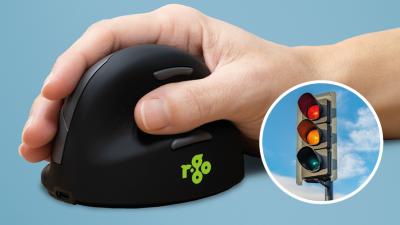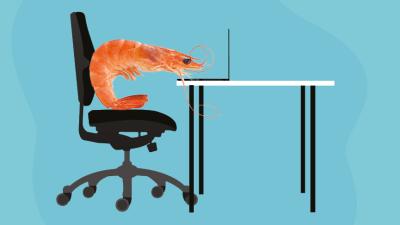Sitting in a car for long periods of time can cause and aggravate back pain. In fact research by the British Chirporactic Association estimates that more than 5.5 million drivers suffer from back and neck problems as a result of time spent in the car.

Pictured: Ferenc from Overland Site, using a Posturite Lumbar Roll For most of us, avoiding driving isn't easy. We rely on our vehicles to take us to work, to the shops and to generally get around. While cycling and taking public transport may be better options (for your health and the environment) these methods of transport inevitably take more time and effort, and simply aren't as comfortable or convenient as heading off in the plush, air conditioned interior of a car.
Fortunately, there are some steps you can take to reduce your risk of back pain without completely boycotting driving.
1. Spend less time in the car
How much time do we spend in our cars?
A survey by Webuyanycar found that in a typical driving lifetime, Brits will travel a distance equivalent to the moon and back, or around the earth 24 times, taking four years of solid driving to do so. This includes an entire eight months sitting in traffic, which can't be good for anyone's wellbeing.
Cycle or take public transport
Look at charity Sustrans' website to find cycling routes near you. You might be surprised by how easy it is to cycle instead of drive - and you'll reap the health benefits of getting fitter, losing weight and having more time to yourself to enjoy the great outdoors and get fresh air and vitamin D from the sun.
Work from home
Having a flexible working arrangement can significantly cut the time you have to spend in a car commuting to and from an office.
2. Adjust your set-up
Seat height
Raise seat to a height that allows an unobstructed view of the road, and adequate head clearance on the roof so you don't have to slouch or hang your head.
Seat depth
Side your sleet forward until you can fully press down on the pedals without stretching. Make sure the edge of the seat isn't pressing into the backs of your knees as this will impede blood flow and feel uncomfortable.
Back angle
Make sure the back rest is upright enough to support the whole length of your back and shoulders, allowing your hands to rest naturally on the steering wheel with a slight bend in your arms. If you're too reclined you may find yourself jutting your head forward to see properly, which could cause strain in your neck.
3. Check your body and positioning
Are you tensing, or leaning on one side? Once you've set up your seat, steering wheel and mirrors suitably you should find it easier to sit in a natural but supported position.
Make sure you're not getting into bad habits like leaning one arm on the window, or keeping your hand clasped over the gear stick. Try to relax your shoulders, engage your core muscles and keep a bend in your arms when they're on the steering wheel.
4. Add lumbar support, if needed
Not all car seats will have adequate lumbar (lower back) support for you. We're all different and some people have more pronounced curves in their lower spine than others.
A good seat should support the curve in the lower back. Without that support, you might find it difficult to maintain a good posture, so the spine and muscles have to work harder to support the correct alignment. Over time the muscles start to tire and typically the head will start to lean forward into a back-pain-inducing slouch.
If you go on driving trips frequently or drive thousands of miles for fun (known as overlanding), you may want to kit your car up with a detachable lumbar cushion. That's what full time overlanders and owners of Overland Site Ferenc and Evelin did. You can read their review of the Posturite Lumbar Roll here.
5. Take regular breaks
Always break long drives up with breaks. Aim for at least fifteen minutes every two hours, as recommended by the Highway Code. Use these breaks to stretch and walk to relieve any stress in your muscles and improve your blood flow.
Browse our collection of lumbar supports for yourself, or read this article to find out how to choose the right lumbar support for you.











